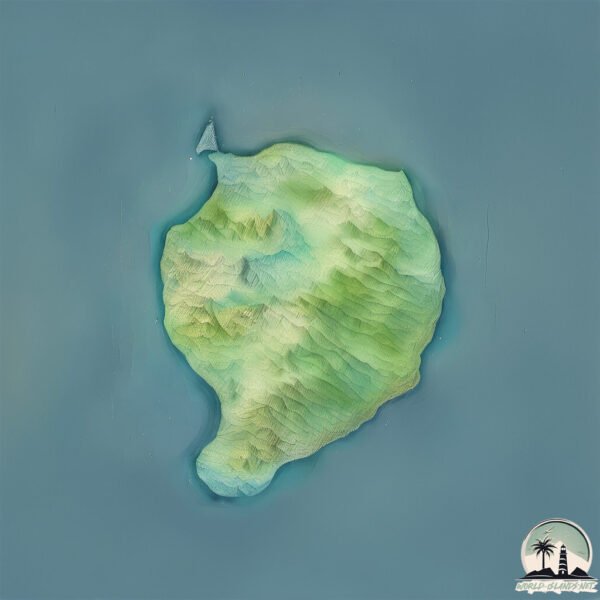Corvo

Welcome to Corvo, a Temperate island in the North Atlantic Ocean, part of the majestic Atlantic Ocean. This guide offers a comprehensive overview of what makes Corvo unique – from its geography and climate to its population, infrastructure, and beyond. Dive into the details:
- Geography and Size: Explore the island’s size and location.
- Climate and Weather: Weather patterns and temperature.
- Topography and Nature: Uncover the natural wonders of the island.
- Infrastructure and Travelling: Insights on reaching, staying, and making the most of your visit.
- News and Headlines: Latest News.
Geography and size of Corvo
Size: 17.4 km²
Coastline: 18.6 km
Ocean: Atlantic Ocean
Sea: North Atlantic Ocean
Continent: Seven seas (open ocean)
Corvo is a Medium Island spanning 17 km² with a coastline of 19 km.
Archipel: Azores – An autonomous region of Portugal in the North Atlantic Ocean, known for their volcanic landscapes, rich maritime history, and unique Azorean culture.
Tectonic Plate: North America – Covers North America and parts of the Atlantic and Arctic Oceans, characterized by diverse geological features and varying levels of seismic activity.
The geographic heart of the island is pinpointed at these coordinates:
Latitude: 39.7026397 / Longitude: -31.10643709
Climate and weather of Corvo
Climate Zone: Temperate
Climate Details: Temperate Oceanic Climate
Temperature: Warm Summer
Climate Characteristics: Known for its moderate year-round temperatures with ample rainfall and no dry season. Warm summers are characteristic.
Topography and nature of Corvo
Timezone: UTC-01:00
Timezone places: Atlantic/Cape_Verde
Max. Elevation: 570 m
Mean Elevation: 343 m
Vegetation: Open Woodland
Tree Coverage: 46%
The mean elevation is 343 m. The highest elevation on the island reaches approximately 570 meters above sea level. The island is characterized by Mountains: High, steeply elevated landforms. Characterized by both a high maximum elevation (over 500 meters) and a high mean elevation, creating rugged, mountainous terrains on islands.
Dominating Vegetation: Open Woodland
Characterized by sparsely distributed trees with open canopy allowing sunlight to penetrate, supporting grasses and shrubs underneath. Often found in drier or transitional environments. Corvo has a tree cover of 46 %.
Vegetation: 7 vegetation zones – Very Highly Diverse Island
Islands in this range are ecological powerhouses, showcasing a wide array of vegetation zones. Each zone, from lush rainforests to arid scrublands, coastal mangroves to mountainous regions, contributes to a complex and interdependent ecosystem. These islands are often hotspots of biodiversity, supporting numerous species and intricate ecological processes.
Infrastructure and Travelling to Corvo
Does the island have a public airport? yes.
Corvo has a public and scheduled airport. The following airports are located on this island: .
Does the island have a major port? no.
There are no major ports on Corvo. The closest major port is HORTA, approximately 301 km away.
The mean population of Corvo is 3 per km². Corvo is Gently Populated. The island belongs to Portugal.
Continuing your journey, Flores is the next notable island, situated merely km away.
CORVO - the smallest island in the AZORES



Portugal is classified as Developed region: nonG7: Developed economies outside of the Group of Seven, characterized by high income and advanced economic structures. The level of income is High income: OECD.
News – Latest Updates and Headlines from Corvo
Stay informed with the most recent news and important headlines from Corvo. Here’s a roundup of the latest developments.
Please note: The data used here has been primarily extracted from satellite readings. Deviations from exact values may occur, particularly regarding the height of elevations and population density. Land area and coastline measurements refer to average values at mean high tide.
